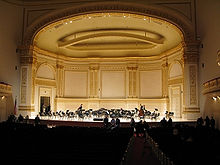Bolero is a genre of song which originated in eastern Cuba in the late 19th century as part of the trova tradition. Unrelated to the older Spanish dance of the same name, bolero is characterized by sophisticated lyrics dealing with love. It has been called the "quintessential Latin American romantic song of the twentieth century".

Originally, Trio Los Panchos were a trío romántico formed in New York City in 1944 by Alfredo Gil, Chucho Navarro, and the Puerto Rican Hernando Avilés. The trio became one of the leading exporters of the bolero and the romantic ballad in Latin America.
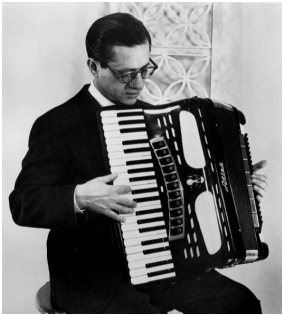
John Serry Sr. was an American concert accordionist, arranger, composer, organist, and educator. He performed on the CBS Radio and Television networks and contributed to Voice of America's cultural diplomacy initiatives during the Golden Age of Radio. He also concertized on the accordion as a member of several orchestras and jazz ensembles for nearly forty years between the 1930s and 1960s.
"Granada" is a song written in 1932 by Mexican composer Agustín Lara. The song is about the Spanish city of Granada and has become a standard in music repertoire.
"You Belong to My Heart" is the name of an English-language version of the Mexican Bolero song "Solamente una vez". This song was composed by Mexican songwriter Agustín Lara and originally performed by singer Ana María González and tenor José Mojica in the 1941 film Melodías de América.
Alfredo Antonini was a leading Italian-American symphony conductor and composer who was active on the international concert stage as well as on the CBS radio and television networks from the 1930s through the early 1970s. In 1972 he received an Emmy Award for Outstanding Achievement in Religious Programming on television for his conducting of the premiere of Ezra Laderman's opera And David Wept for CBS television during 1971. In addition, he was awarded the Order of Merit of the Italian Republic in 1980

Viva América was an American musical radio program which was broadcast live over the CBS radio network and to North and South America over the "La Cadena de las Américas" during the 1940s (1942–1949) in support of Pan-Americanism during World War II. It was also broadcast for the benefit of members of the armed forces in Europe during World War II over the Armed Forces Network. All broadcasts of this program were supervised under the strict government supervision of the United States Department of State and the Office of the Coordinator of Inter-American Affairs (OCIAA) as part of the United States Cultural Exchange Programs cultural diplomacy initiative authorized by President Franklin D. Roosevelt during World War II through the Office for Coordination of Commercial and Cultural Relations (OCCCRBAR), and the Office of the Coordinator of Inter-American Affairs directed by Nelson Rockefeller.

Rodrigo Alvarez de la Cadena is a Mexican singer, performer, songwriter, radio host and musician. He is best known for his performances with a variety of worldwide artists and performers. He is also the host of a live radio show in which he performs and introduces audiences to his music.
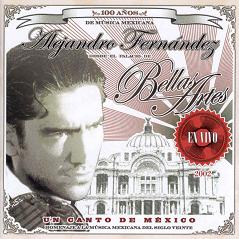
Un Canto de México is the tenth album by Mexican singer Alejandro Fernández. It was recorded during a performance in the concert hall of the "Palacio de Bellas Artes". The concert paid tribute to Mexico's greatest singers and songwriters of some of the great Mexican songs of the last century.

The Conservatorio Nacional de Música (CNM) is a music conservatory located in the Polanco neighborhood of Mexico City, Federal District, Mexico.
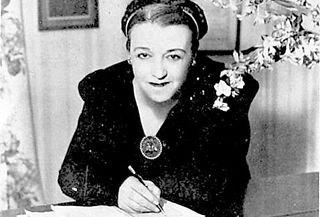
María Grever was the first female Mexican composer to achieve international acclaim. She is best known for the song "What A Difference A Day Makes", which was popularized by Dinah Washington and has been covered by numerous artists.

Terig Tucci was an Argentine composer, orchestrator, conductor, violinist, pianist, and mandolinist. He was a leading advocate of music for the tango in the United States who collaborated with the singer Carlos Gardel.
Miguel Angel Sandoval Cabrera, was a Guatemalan-born American pianist, conductor and composer. He spoke Spanish, English, French, and Italian. His musical works contributed greatly to both countries, and he is viewed as a musical ambassador of Guatemala.
Eva Garza was a Mexican-American singer and film actress who acquired international recognition in the 1940s and 1950s during the Golden Age of Mexican cinema. She collaborated on live radio shows and films with some of the leading performers of her time, including Mexico's Agustín Lara. She was nicknamed "Sweetheart of the Americas".

When I Leave is a 1954 Mexican musical drama film directed by Tito Davison and starring Libertad Lamarque, Miguel Torruco and Prudencia Grifell. It portrays the life of the bolero composer María Grever.
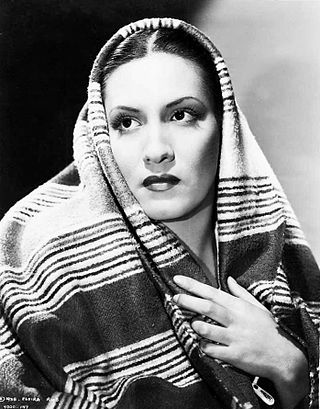
María Elvira Gallegos Ríos was a Mexican singer and actress.
Manolo Álvarez Mera(néManuel Ernesto Álvarez-Mera 7 November 1923 Havana, Cuba – 16 October 1986 New York City) was a Cuban-born tenor who flourished as a bel canto during the late 1940s and 1950s. Despite having an operatic caliber voice, he gained popularity singing in operettas, musical reviews, radio, television, vaudeville, and major night clubs in Cuba, New York, and Latin America. He became a Cuban exile in 1960 after the Cuban Revolution.
"Noche de ronda" is a waltz written by Mexican songwriter and composer Agustín Lara and published in 1935. Mexican singer Elvira Ríos sang the song in the 1937 film ¡Esos hombres!. It became her signature song and one of the biggest hits of her career. She recorded it four times: in 1936, as a 78 rpm single for RCA Victor; in 1940, for her Decca album Tropic Nights; in 1957, for her RCA Victor album Noche de ronda; and in 1974, for her Orfeón album La emocional Elvira Ríos.

Juan Nepomuceno Arvizu Santelices, was an acclaimed lyric tenor in Mexico and a noted interpreter of the Latin American bolero and tango on the international concert stage, on the radio and in film. He was widely noted for his interpretations of the works of Agustin Lara and María Grever and was nicknamed "The Tenor With the Silken Voice".

Elsa M. Miranda was a noted Puerto Rican singer who was featured on radio and television in the United States during the Golden Age of Radio in the 1940s. As a naturalized Argentinian, she was also active as a film actress in South America during the 1950s.

